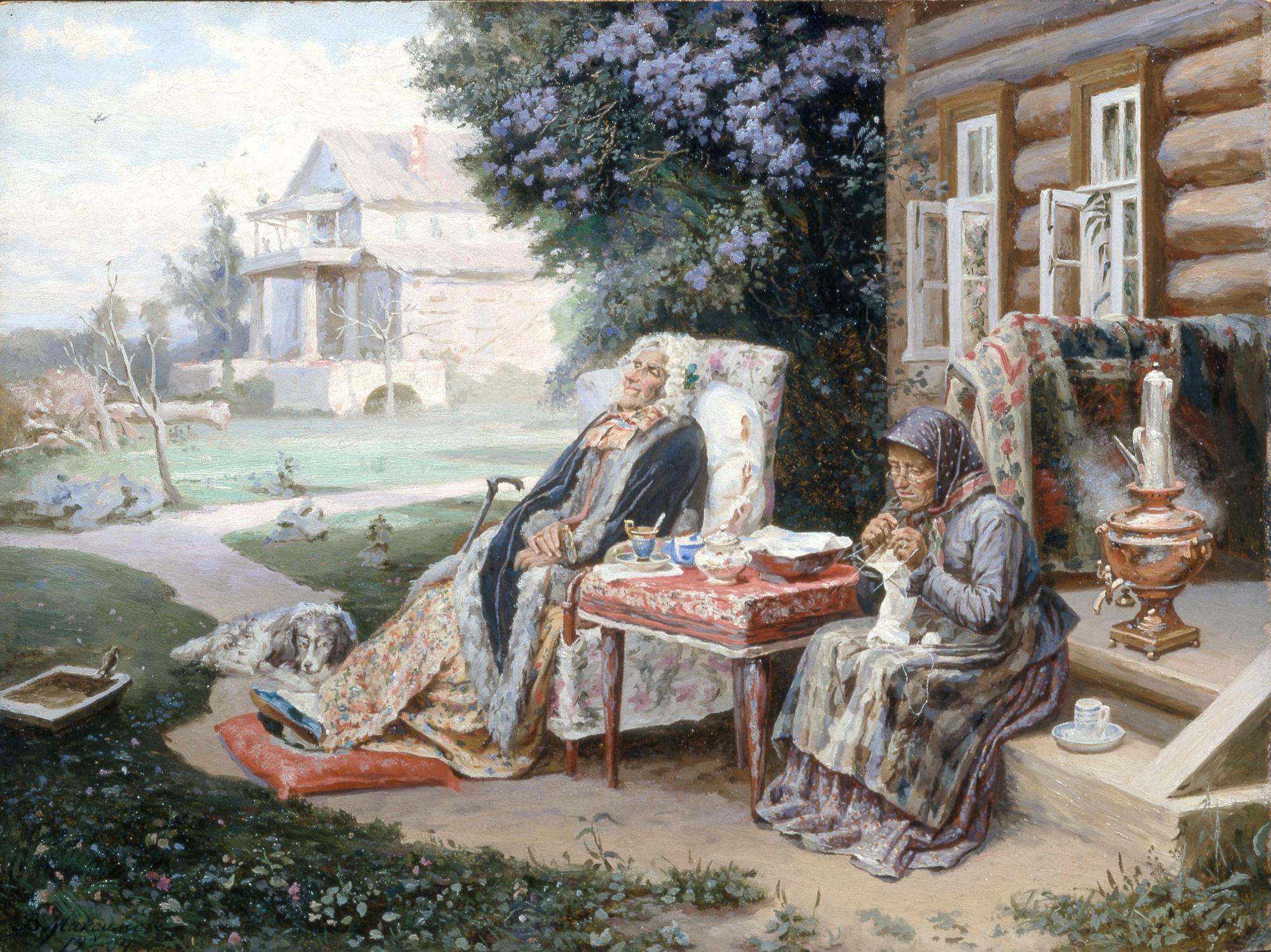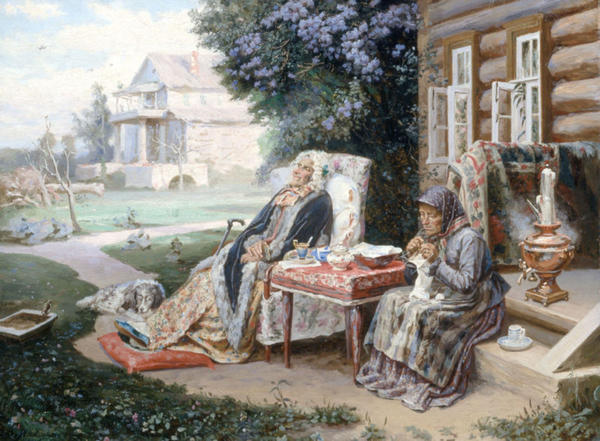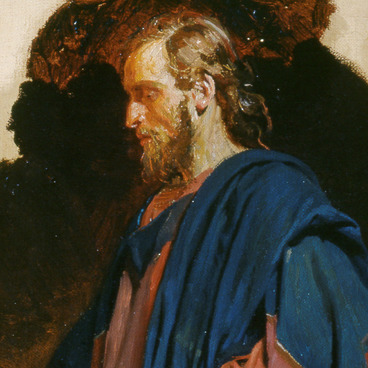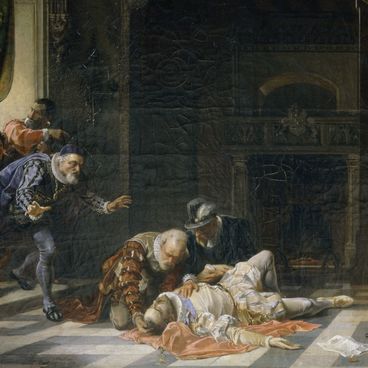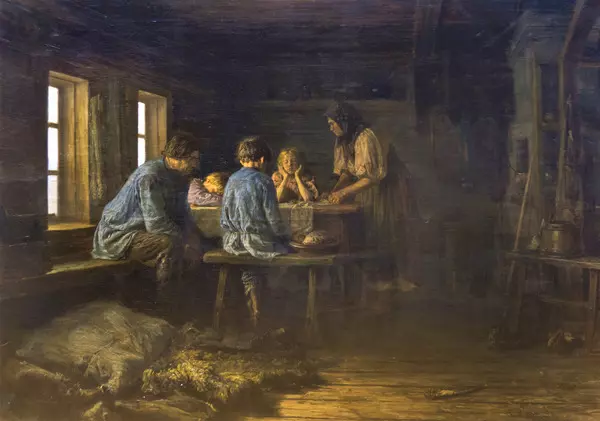Artist Vasily Maksimov to whose brush Everything is in the Past belongs, was born to a peasant family. He knew well Russian country life and ways as his childhood had passed in the countryside. In his canvases, he depicted peasants’ domestic life and customs accurately capturing their details. The theme of country life is the subject of his picture Sorcerer Comes to a Peasant Wedding.
The theme of noblemen’s manor estates receding to the past struck an important note in the Russian art of the second half of the 19th century. Artists were interested in the destinies of their former dwellers. Maksimov conveys the sense of longing for the life gone by and contemplates the evanescence of life in general.
The idea of the future work occurred to the artist during his travels around the Volga region in the 1860s. In one of the estates in Tver Guberniya, he taught drawing to the children of the lady of the manor. The artist was impressed by the posh furniture and decoration of the manor and stories about its former rich and grand life style. So, the theme of the picture was prompted by the life style which was no longer there.
The work combines artistic expressiveness and social charge. Maksimov depicted a scene in an old estate. In the foreground, outside the courtyard house, the lady of the manor sits in an armchair brooding. She is an elderly woman but she has preserved her noble stature. Her devoted servant, a simple old country woman, is sitting next to her. A lilac bush is blooming wildly over the lady’s head, as are the flowers on the grass in front of the courtyard house. A samovar is steaming comfortingly; a dog is sleeping at the mistress’ feet.
In the background, a big manor sits desolate with nailed-up windows. It used to be bursting with life, now it is surrounded with dry fallen trees. The classical architecture of the old house with a portico is associated with the literary motif of a dying ‘nest of gentlefolk’.
The original version of the picture was painted in 1889; it is part of the Tretyakov Gallery collection. When Maksimov first exhibited the picture, it was a great success with the public. The canvas was so popular with the buyers that the artist replicated it many times. He made 40 replicas in total. The version presented at the exhibition was painted in 1904.
The theme of noblemen’s manor estates receding to the past struck an important note in the Russian art of the second half of the 19th century. Artists were interested in the destinies of their former dwellers. Maksimov conveys the sense of longing for the life gone by and contemplates the evanescence of life in general.
The idea of the future work occurred to the artist during his travels around the Volga region in the 1860s. In one of the estates in Tver Guberniya, he taught drawing to the children of the lady of the manor. The artist was impressed by the posh furniture and decoration of the manor and stories about its former rich and grand life style. So, the theme of the picture was prompted by the life style which was no longer there.
The work combines artistic expressiveness and social charge. Maksimov depicted a scene in an old estate. In the foreground, outside the courtyard house, the lady of the manor sits in an armchair brooding. She is an elderly woman but she has preserved her noble stature. Her devoted servant, a simple old country woman, is sitting next to her. A lilac bush is blooming wildly over the lady’s head, as are the flowers on the grass in front of the courtyard house. A samovar is steaming comfortingly; a dog is sleeping at the mistress’ feet.
In the background, a big manor sits desolate with nailed-up windows. It used to be bursting with life, now it is surrounded with dry fallen trees. The classical architecture of the old house with a portico is associated with the literary motif of a dying ‘nest of gentlefolk’.
The original version of the picture was painted in 1889; it is part of the Tretyakov Gallery collection. When Maksimov first exhibited the picture, it was a great success with the public. The canvas was so popular with the buyers that the artist replicated it many times. He made 40 replicas in total. The version presented at the exhibition was painted in 1904.
